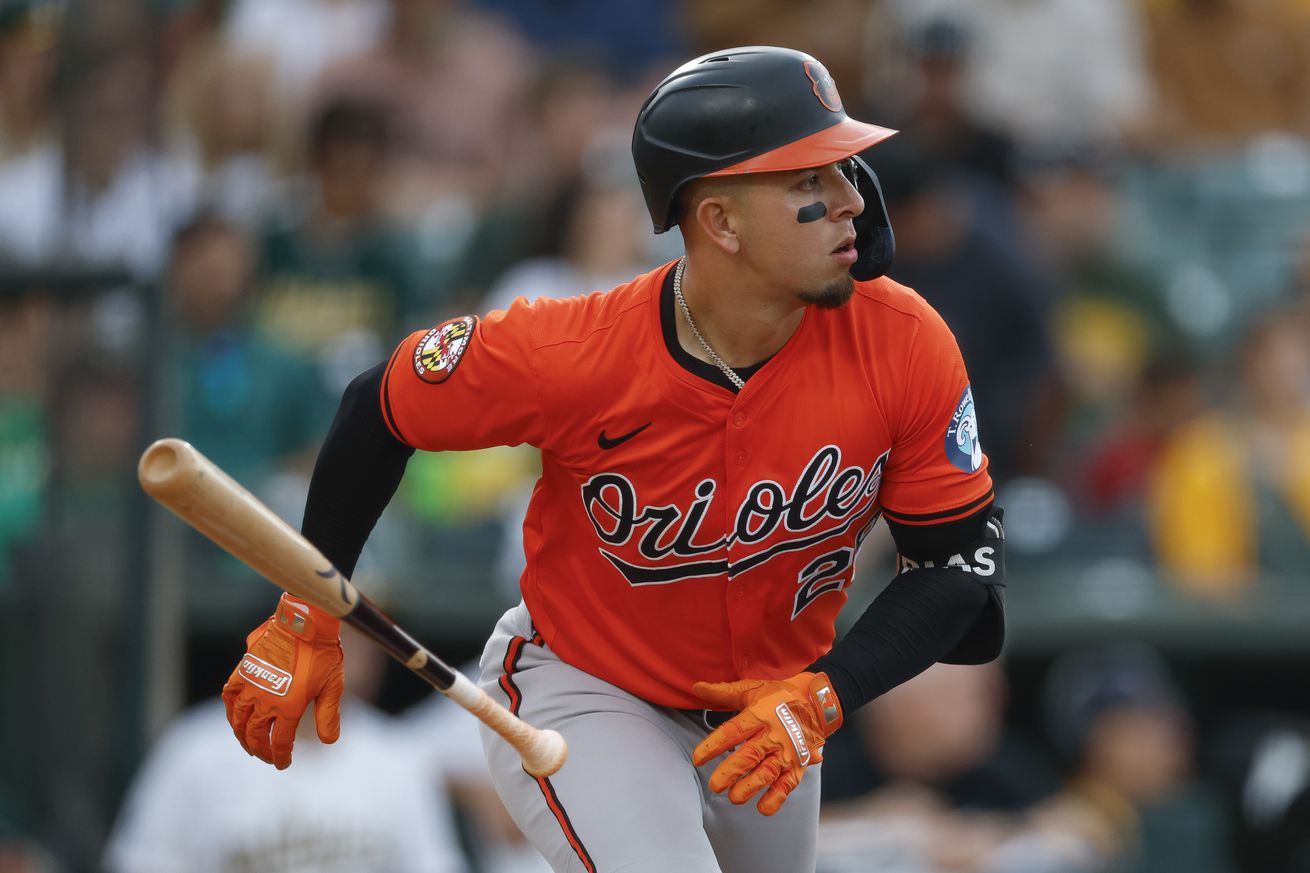
The Orioles keep expecting to move on from the versatile infielder, but injuries and inconsistencies continue to make him an invaluable part of the team.
It’s funny, because it took me like five tries to get the Orioles social media team’s long-running joke about the “Ramón Empire,” but the truth is, I don’t spend that much time thinking about infielder Ramón Urías, and I bet you don’t, either.
In my eyes, Urías is less like the ancient civilization that gave us aqueducts, newspapers, dictators, fish sauce, Latin and numerals we struggle to read and more like the proverbial cat with nine lives. Because it’s been years now that we’ve been predicting Urías’s eventual overshadowing/replacement by the Orioles’ youth movement, and still, Ramón sticks around, gracing us with low-key good defense and a solid right-handed bat.
If you remember, Urías made his major league debut in the dark ages of Orioles baseball, a former St. Louis farmhand who was back in Mexico playing winter ball with the Los Mochis out of Sinaloa, which is where the Orioles found him. In parts of five seasons since, Urías has been an above-average hitter and fielder each year.
Urías made his MLB debut in August 2020 at age 26. Make no mistake, this was a very bad Orioles team. Urías’s competition on the diamond included the light-hitting Río Ruiz and Andrew Velásquez, a slow-footed Pat Valaika, and a ham-handed Renato Núñez. Urías was signed to provide infield depth and soon proved much better than the starters. In 10 games that season, he hit .360 with a pair of doubles and a home run.
Urías returned in 2021 and proved this was no fluke, hitting .279 in 85 games with a .774 OPS, 111 OPS+ and a friendly .361 OBP. He was backing up Maikol Franco then, and I can tell you with no trouble which one I preferred to see on the diamond. The 2022 season was Urías’s best: not only did he contribute 3.8 WAR in a career-high 118 games, he slugged .414, hit 16 home runs, and won a Gold Glove at third base, the Orioles’ first since Manny Machado in 2015 at the same position. (It’s my sense Urías has to be one of the most low-key Gold Glove winners ever, and by that I don’t meant to say it was undeserved.)
Urías continued to hit for average in 2023, with a .264 average, but he didn’t hit much for power or get many free passes, as a .328 OPS and .375 SLG suggest. In 2024 he found his power stroke again, with 22 extra-base hits, including 11 home runs, in 100 games. This season has been slow for him, as for the rest of the team: Urías didn’t homer until a month into the season, and he still has just three in 46 games. He went down on May 3 and ended up missing eight games with a right hamstring injury at a time the Orioles really could have used him, stuck in a stretch of bad infield defense and dreadful right-handed hitting.
Speaking of which, there are several reasons Urías hasn’t become an everyday player, and power is probably one of them. Not counting ten games in 2020, Urías slugged a career high .423 last season, but he’s been inconsistent, his power dipping in the odd years, apparently. He has only nine extra-base hits this year, two in his last five games. (Maybe he’s heating up?)
Plate discipline is another reason. Baltimore has a 7.7% walk rate and 23.9% strikeout rate. Urías is not a classroom leader here, with career numbers right around there himself. Surprisingly, however (at least to me), this year he’s walking and striking out at or near career-best rates, at 9.2% and 18.5%, respectively. These numbers put him in the company of team frontrunners like Adley Rutschman and Ryan O’Hearn, at least in terms of avoiding strikeouts. Adley continues to is set the pace in walks, at 11.6%.
Another factor that’s potentially limited Urías’s playing time is the Orioles’ recent lineup-building philosophy. The Orioles were the single most platoon-happy team in baseball in 2024, although it may be that as we step bravely forward into a post-Brandon Hyde world, the Orioles become less militantly pro-platoon. For what it’s worth, platooning Urías, who has .268/.243 career righty-lefty splits in average and very similar numbers on OPS, .736/.729, doesn’t make a whole of sense.
Another reason Urías isn’t an everyday player is, simply, that he isn’t a star, and the Birds have drafted several young infielders—Holliday, Henderson, Westburg—who are, or hopefully will be. Urías is always steady, never spectacular.
Then again, Wednesday’s game against Detroit was a good example of the infielder at his best. Ramón kicked off the scoring with a two-run home run off Tigers starter Casey Mize and made two game-stabilizing defensive plays. In one, Urías kicked off an inning-ending double play and in the other, he threw out a runner at home to preserve a 2-1 lead. Over his last five games entering Thursday night, Urías was 6-for-17 with a double and a home run, which ain’t bad considering how this offense has looked all season.
It’s all too easy to overlook Urías’s contributions. Consider that over the last five years the Orioles have cycled through 32 infielders, and Urías is still here somehow. Or, another crazy thing: Urias’s 10.1 career WAR in parts of five years with Baltimore (none of which he played a full season) already puts him not too far from the Orioles’ Top 50, close enough to sniff guys like Erik Bedard (12.8 career WAR), Ben McDonald (13.7) and Mike Bordick (14.5).
So while I don’t sit around daydreaming of the Ramón Empire, an MLB team could really do a lot worse.
